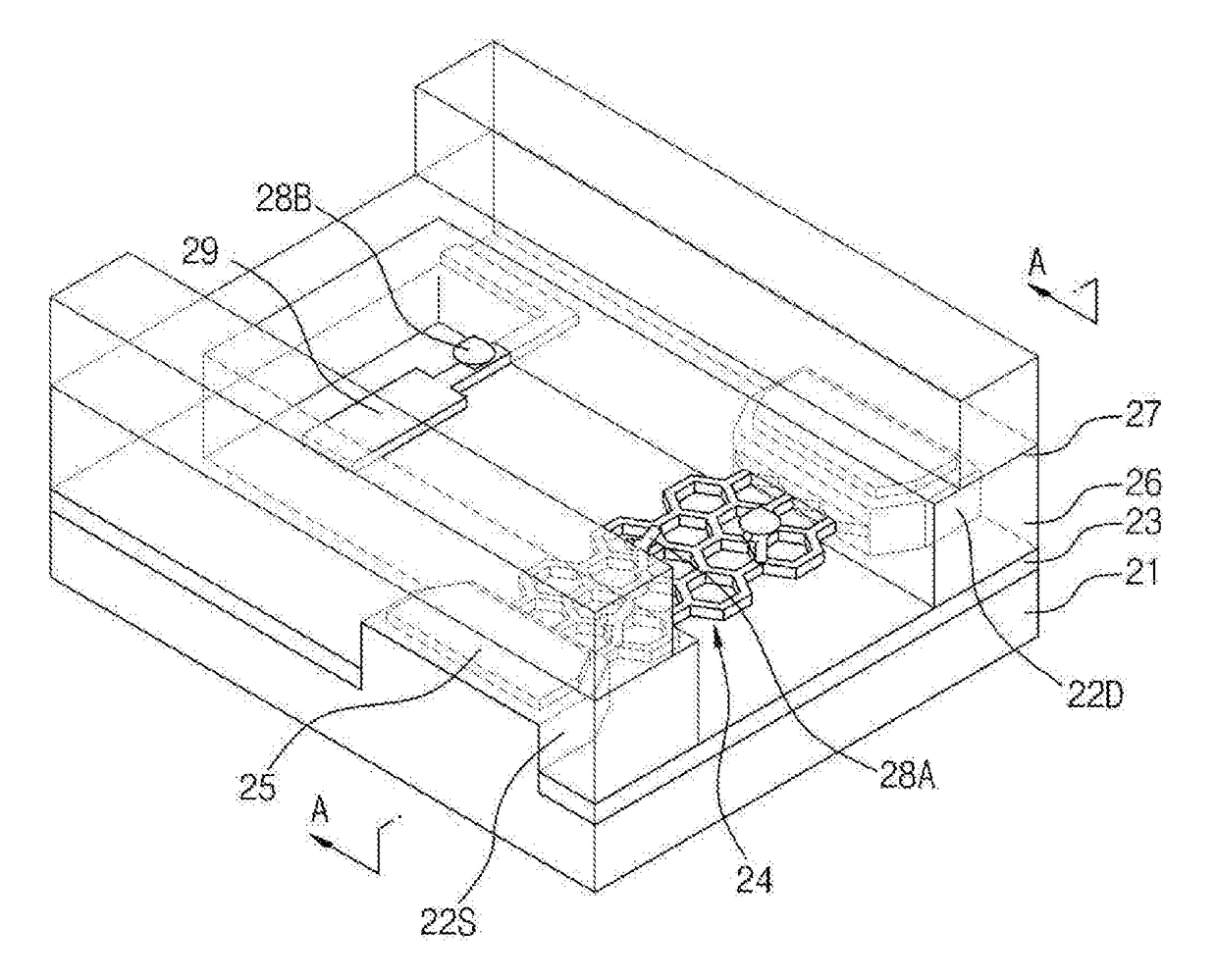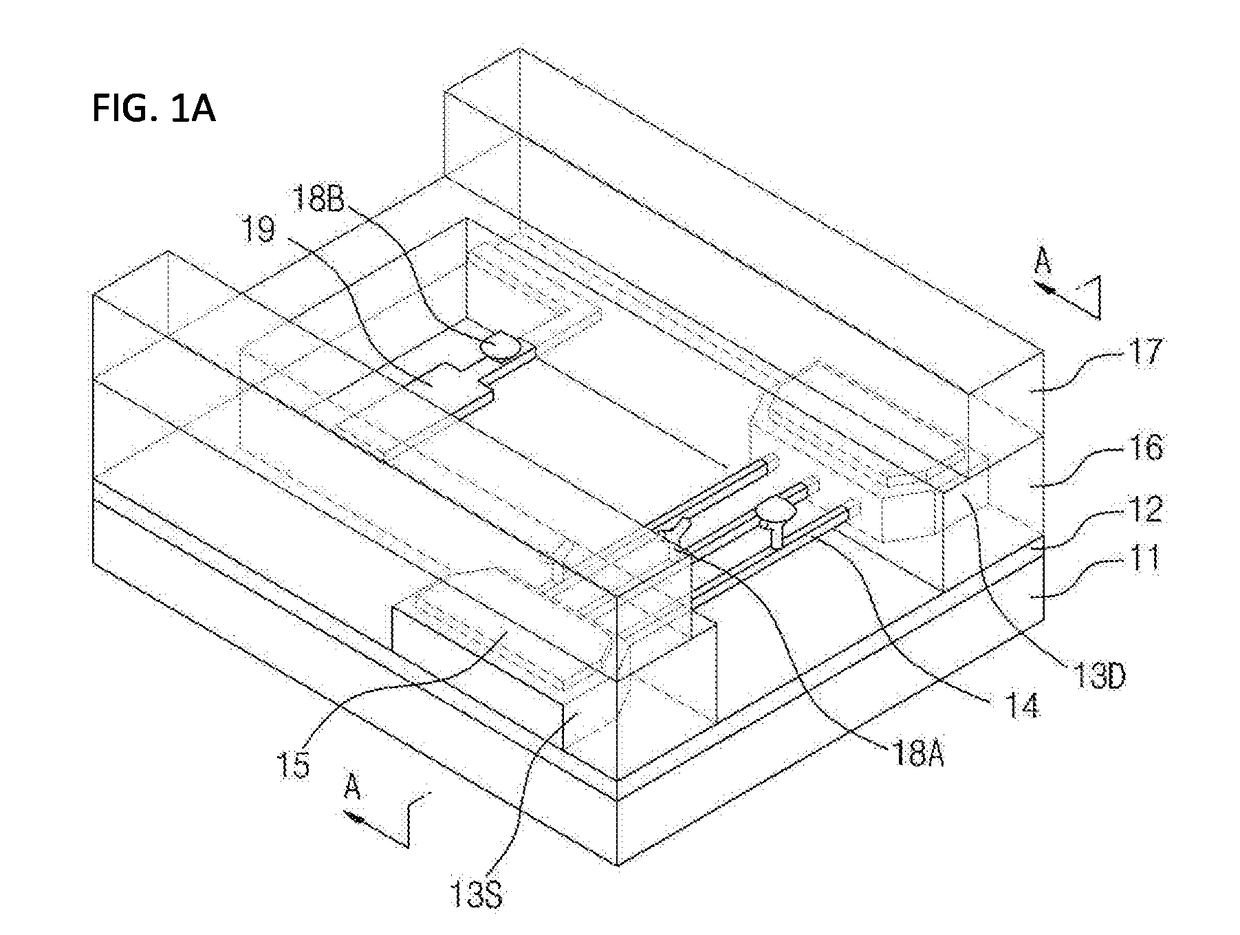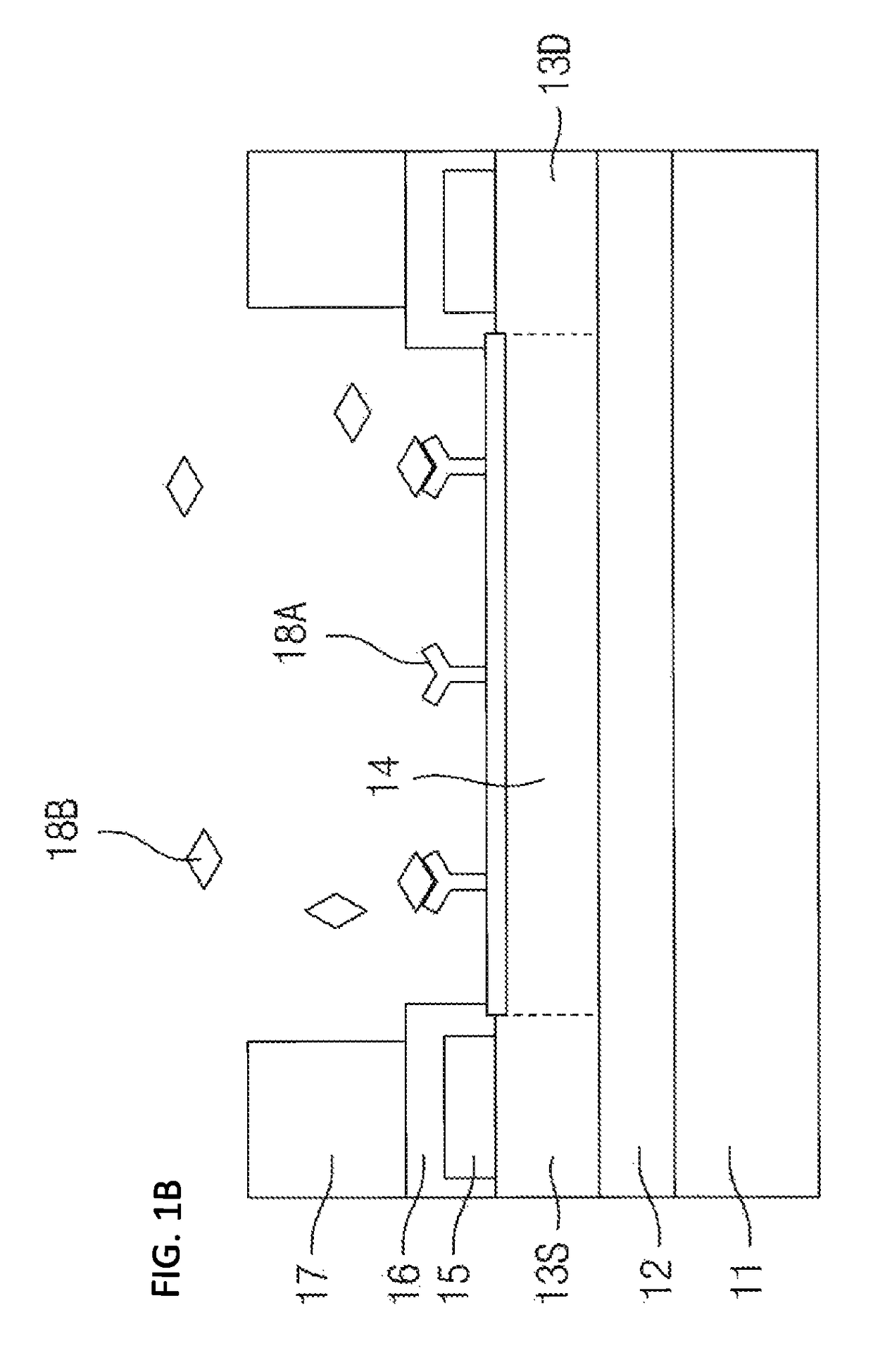Nanowire field-effect sensor including nanowires having network structure and fabrication method thereof
a nanowire and field-effect sensor technology, applied in the field of nanowire field-effect sensor technology, can solve the problems of difficult separation, deterioration of sensor characteristics, and difficulty in reuse of fixed receptor material after separation from detection surface, and achieve the effect of increasing electrical conductivity
- Summary
- Abstract
- Description
- Claims
- Application Information
AI Technical Summary
Benefits of technology
Problems solved by technology
Method used
Image
Examples
Embodiment Construction
[0039]Hereinafter, preferred embodiments of the present invention will be described with reference to the accompanying drawings.
[0040]FIG. 2A illustrates the structure of a nanowire field-effect sensor according to an embodiment of the present invention, and FIG. 2B is a cross-sectional view taken along line A-A of FIG. 2A.
[0041]Referring to FIGS. 2A and 2B, the nanowire field-effect sensor according to the embodiment of the present invention includes: a source electrode region 22S and drain electrode region 22D formed on both sides of a bulk silicon substrate 21 so as to be opposite to each other; a nano-network 24 connected between the source electrode region 22S and the drain electrode region 22D and having a network structure in which a gate insulating layer 24-2 is applied to a pin 24-1 arranged on each sidewall of the network; a bottom insulating layer 23 disposed between the bulk silicon substrate 21 and the nano-network 24 so as to insulate the nano-network 24 from the bulk ...
PUM
| Property | Measurement | Unit |
|---|---|---|
| width | aaaaa | aaaaa |
| height | aaaaa | aaaaa |
| size | aaaaa | aaaaa |
Abstract
Description
Claims
Application Information
 Login to View More
Login to View More - R&D
- Intellectual Property
- Life Sciences
- Materials
- Tech Scout
- Unparalleled Data Quality
- Higher Quality Content
- 60% Fewer Hallucinations
Browse by: Latest US Patents, China's latest patents, Technical Efficacy Thesaurus, Application Domain, Technology Topic, Popular Technical Reports.
© 2025 PatSnap. All rights reserved.Legal|Privacy policy|Modern Slavery Act Transparency Statement|Sitemap|About US| Contact US: help@patsnap.com



